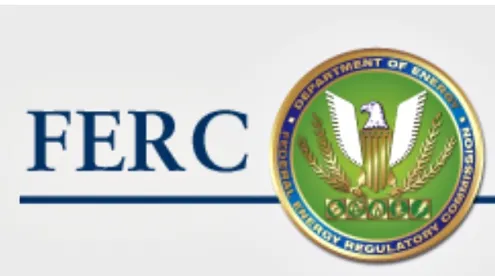By a November 19, 2020 Order on Rehearing, the Federal Energy Regulatory Commission (“FERC” or “Commission”) clarified a discrete set of issues arising from its landmark July 2020 order (“Final Rule”) modifying the Commission’s regulations implementing the Public Utility Regulatory Policies Act of 1978 (“PURPA”).[1] For a more thorough review of the Final Rule, which becomes effective December 31, 2020, please see our previous post. In the Order on Rehearing, the Commission clarified six specific aspects of the Final Rule:
(1) certain circumstances requiring small power production Qualifying Facility (“QF”) recertification;
(2) application of FERC’s rebuttable presumption to determine power production capacity thresholds for small power production QFs with respect to separate sites;
(3) PURPA Section 210(m)’s rebuttable presumption of nondiscriminatory access to markets and accompanying regulatory text;
(4) states’ use of tiered avoided cost pricing;
(5) states’ use of variable energy rates in QF contracts and availability of utility avoided cost data; and
(6) the role of independent entities overseeing competitive solicitations.[2]
The Order on Rehearing also responded to a variety of legal challenges to the Commission’s statutory authority to implement the Final Rule.[3] Although we expect certain of these challenges to be appealed to federal court, this post focuses on the six clarifications outlined above.
Circumstances for Recertification of Small Power Production QFs
In the Final Rule, FERC modified its regulations such that certain changes to a small power production QF’s affiliated generation facilities located less than 10 miles from the QF would have triggered a recertification requirement for the QF. The scope would have included any changes in an affiliated facility’s (1) location; (2) FERC “root” docket number; (3) maximum net power production capacity; or (4) common ownership, all of which is the information required to be provided in line 8a of Form No. 556. Significantly, the Final Rule modified FERC’s regulations such that challengers may protest self-recertification submittals making that recertification process more sensitive.[4] After reviewing rehearing requests, the Commission modified its holding in the Final Rule regarding notice related to small power production QFs’ affiliated generation facilities located less than 10 miles from the QF to require recertification only in the event of changes to affiliated generation facilities located less than one mile from the QF. The Commission will not require recertification for changes to facilities located between one and 10 miles from the QF, or over 10 miles away. In sum, pursuant to the modifications in the Order on Rehearing, the changes triggering recertification apply if the change affects (1) the facility itself, or (2) affiliated facilities that are located within one mile of, and use the same energy source as, the QF. Changes to affiliated facilities located between one and 10 miles of the QF will not trigger an obligation to recertify. When recertifying, however, the QF still will be required to ensure that all material changes to affiliated facilities located within 10 miles of the QF are reflected in the notice of self-recertification. In other words, although changes to affiliated facilities located between one and 10 miles do not, on their own, trigger recertification, such changes must still be communicated to the Commission, by way of Form No. 556, when the QF files for recertification in the future (for example, when changes are made to the QF itself).
Rebuttable Presumption – Siting
In the Final Rule, the Commission established a new set of rules for determining whether affiliated facilities located near each other should be presumed to be at the same site as one another for purposes of determining whether they surpass the Commission’s 80 MW “cap” for QFs. In the Order on Rehearing, the Commission provided two minor clarifications to these rules, leaving them otherwise unchanged. The basic requirements, which remain unchanged, appear in the following chart:
|
Distance |
Evaluation of Whether QFs are at Separate Sites |
|
Irrebuttable presumption that facilities are at the same site |
|
|
1 – 10 miles |
Rebuttable presumption that facilities constitute separate sites |
|
>10 miles |
Irrebuttable presumption that facilities constitute separate sites |
As to the minor clarifications, first, the Commission clarified that for hydroelectric facilities located between one and 10 miles from each other that are located on the same impoundment, the rebuttable presumption that they constitute separate sites applies to them as well. Second, the Commission clarified that QFs may preemptively rely on a list of factors, originally provided in the Final Rule as factors to be used by QF challengers, to defend against possible rebuttal.[5]
Rebuttable Presumption – Nondiscriminatory Access to Markets
The Final Rule established a rebuttable presumption that small power production QFs located in competitive markets (i.e., in RTO/ISO areas) with a net power production capacity over 5 MW have nondiscriminatory access to competitive markets, thereby providing the interconnected utility with the opportunity to make a filing with FERC seeking to eliminate its obligation to purchase from such facilities. Conversely, small power production QFs with a power production capacity at or below 5 MW will be presumed to not have nondiscriminatory access. In the event of a filing by the interconnected utility to eliminate its purchase obligation, the Commission also identified six factors that QF owners could use to rebut this presumption of nondiscriminatory access.
In the Order on Rehearing, the Commission offered several clarifications regarding the factors that a QF owner can use to rebut a presumption of nondiscriminatory access.
First, the Commission clarified that QFs that are behind-the-meter distributed energy resources or DERs may use the fourth factor to argue that their “predominant purpose” is something other than “selling electricity” which would warrant their being treated “similarly to cogenerators.”[6] As explained in the Final Rule, cogenerators that have a primary purpose other than the sale of electricity are less likely to have nondiscriminatory access to electricity markets because the owners of such facilities “might not be as familiar with energy markets,”[7] so the availability of this factor for DERs should provide an additional opportunity to convince the Commission that the presumption of access for a particular DER should be rebutted. Second, the Commission clarified that all six factors that it provided may be applied to QFs in ISO-NE, MISO, NYISO, PJM, and ERCOT. Third, and last, the Commission provided guidance on the interplay of its new siting rules – e.g., the 10-mile rule – and the rebuttable presumption that facilities smaller than 5 MW do not have nondiscriminatory access. The Commission held that its primary focus in determining whether a facility is smaller than 5 MW for purposes of determining nondiscriminatory access will be “the net certified capacity of each QF.” However, the Commission held that it will not be bound by its other siting rules, such as the 10-mile rule, in determining whether a facility is under 5 MW for the purposes of the rebuttable presumption. In other words, the Commission may, but is not required to, consider the production capacities of nearby affiliated generating facilities in determining whether a QF is under 5 MW for these purposes.
Tiered Avoided Cost Pricing
In response to comments filed by California utilities alleging that the Final Rule arguably overturned Commission precedent on the ability of states to use “tiered avoided cost” pricing – a mechanism wherein states could set avoided costs by using only resources that could fulfill a state’s particular procurement mandate, the Commission affirmed its current policy that states may continue to use a tiered avoided cost approach. Accordingly states may continue to set avoided cost rates based only on the costs of resources that can satisfy a particular mandate’s requirements.
Variable Energy Rates
The Final Rule allows states to rely on variable as opposed to fixed energy rates for QF sales. Thus, if a state chooses to adopt variable energy rates for QF sales, a QF owner may no longer have the opportunity to sell at fixed energy rates but would continue to be eligible for a fixed capacity rate for the term of the legally enforceable obligation – LEO - or contract. In the Order on Rehearing, the Commission rejected arguments from a variety of stakeholders that a transition to variable rates would impermissibly stifle investment in QF development. The Commission did recognize, however, that the Final Rule contained an ambiguity regarding the data publication requirements for states wishing to use variable energy rates. As a result, the Commission clarified that “a state may only use variable rates to set avoided energy costs if the utility has fulfilled its obligations to disclose avoided cost data under 18 CFR 292.302.”[8] Section 292.302 of the Commission’s regulations generally requires public utilities, every two years, to “make available data from which avoided costs may be derived.”[9]
Competitive Solicitations to Determine Avoided Costs Must Be Administered by Independent Entities
The Final Rule allowed states to rely on a competitive solicitation process, such as a Request for Proposal process that includes both QF and non-QF resources, to establish avoided cost energy and capacity rates. The Commission also established certain minimum criteria in its Final Rule that should govern the competitive solicitation process.[10] In the Order on Rehearing, the Commission affirmed the ability of states to use a competitive solicitation process but clarified that states must use an independent entity to administer such process “to ensure a fair competitive solicitation” and that the solicitation is consistent with the criteria established in the Final Rule. The Commission declined to be “overly prescriptive” in specifying the type of third party that must administer the solicitation process, but affirmed its holding in the Final Rule that the independent entity may be an “independent administrator” or a “third party consultant.” The “substantive requirement,” the Commission explained, “is that the competitive solicitation not be administered by the purchasing electric utility itself or its affiliates, but rather by a separate, unbiased, and unaffiliated entity not subject to being influenced by the purchasing utility.”[11]
If you have any questions about the implications of the Commission’s changes to its PURPA regulations, please do not hesitate to reach out to the Bracewell team. We will work to keep you apprised of any developments once the Commission begins applying these updated requirements.
[1] Qualifying Facility Rates and Requirements, Order No. 872, 172 FERC ¶ 61,041 (2020), order on reh’g, Order No. 872-A (2020).
[2] Order No. 872-A at P 3.
[3] See e.g., Order No. 872-A at PP 114-44 (discussing whether the Final Rule “encourages” QF development, as the Commission is required to do by statute).
[4] For more discussion on the implications of the ability to protest QF certification and recertification, which remains unchanged by the Order on Rehearing, please see our previous blog post here.
[5] These factors, contained in paragraph 509 of the Final Rule, broadly relate to two categories: (1) physical characteristics and (2) ownership/other characteristics. Order No. 872 at P 509.
[6] Order No. 872-A at P 371.
[7] Order No. 872 at P 644.
[8] Order No. 872-A at P 179.
[9] 18 C.F.R. 292.302(b).
[10] Order No. 872-A at P 185.
[11] Order No. 872-A at P 223 (quoting Order No. 872 at P 435).





 />i
/>i

